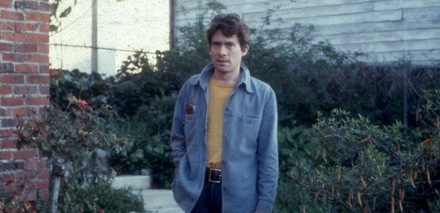Now that everyone's seen the yockumentary on Bob Dylan's 1975-76 Rolling Thunder tour, it's time for me to invent memories of those remarkable days.
As a young man, recently arrived in Los Angeles with hopes of meeting David Bowie, I was disappointed to learn that the Starman had just ceased residing here. So the next best thing was Bowie's guitarist, the ingenious Mick Ronson. Ronson, seeking another chameleonic icon to support, had joined the road band of fading folksinger Bob Dylan -- Ronson saw this as a logical career step, since back in 1971 he had played on the Bowie track "Song for Bob Dylan," a plea for Zimmy's resurrection. In turn, Dylan had been inspired to smear his face with white makeup after hearing the tune's lyric "Here she comes again, the same old painted lady."
Dylan had omitted Los Angeles from the tour schedule, venturing no closer than Salt Lake City because "In L.A., they spill leek soup on me." I didn't know it then, but Dylan was referring to my future wife, a distracted waitress who had served him nascent Cali Cuisine at Bruce Marder's Cafe California in Venice.
Undeterred by the distance, I stuck out my thumb and hitchhiked to Waltham, Massachusetts, arriving in time for the Revue's 16th date, at Brandeis University, on November 22, 1975. On this 12th anniversary of John F. Kennedy's assassination, Dylan made nice to the Semitic home crowd, praising Dallas club owner Jack Ruby for having gunned down Kennedy assassin Lee Harvey Oswald: "That's how America should unite -- Jewish mobsters avengin' Irish mobsters to fight communism. And don't forget Sinatra."
I got backstage by claiming to be Sex Pistols guitarist Steve Jones, on a guilty mission to return the Les Paul he had stolen from Ronson in London. Once Mick sussed my ruse, he turned cold, moving me closer to Dylan, who had wanted to boot Ronson for "playin' all that glam shit" but couldn't get rid of him.
Sharon Stone had caught Dylan's eye in her capacity as tour seamstress, and he sent me to propose an assignation. The teen actor agreed but fell asleep (past her bedtime), so Dylan and I had to settle for a marathon slapjack tournament, wherein he won 41 straight card games thanks to his quick reflexes: "You can't go no further without the Jack o' Hearts!"
The Dylan-directed 1978 Rolling Thunder film "Renaldo and Clara" has prompted much speculation about the romantic entanglements between Dylan and the women who surrounded him -- Joan Baez, Sara Dylan, Ronee Blakley and Scarlet Rivera. In truth, Dylan had little energy left over for dalliance, and I resolved the competition by explaining to the women that the song "Isis" was about none of them in particular but rather about the unnamed goddess who revealed the immutable nature of the universe to the pre-Socratic philosopher Parmenides. They had to agree that to Dylan, women were just "pyramids all embedded in ice."
Similarly, Dylan maintained a fascination for Lot's biblical wife, whom God turned into a pillar of salt when she looked back during the family's flight from Sodom. Dylan saw her as another representation of Robert Graves' White Goddess, a connection that motivated his choice of the Salt Palace in Salt Lake City as the final stop on the Rolling Thunder tour, May 25, 1976.
As the sun rose over the Mormon Tabernacle the next morning, Dylan and I walked the streets, sharing mythological ponderations. I suggested that he expand his research by studying the New Testament; he might be interested in Mary's theological evolution from humble tool to Mother of God, and her status as the wedge that permitted ancient goddess worship to syncretize with the teachings of Jesus and create a dominant world religion.
"Who knows?" he said. "I might change my way of thinkin'." And that's how, for a while, Bob Dylan became a Christian.
* * *
BURK PHOTO BY PAUL DeCUIR. One hand is tied to the tightrope walker, the other is in his pants.

